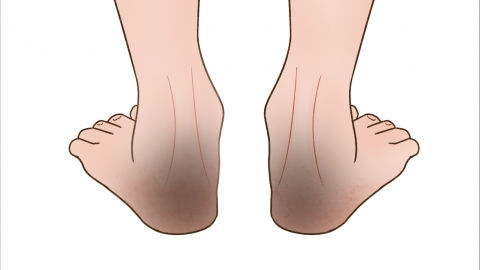What should I do about calluses on my heels?
Hard skin on the heels can be improved through gentle removal of dead skin, enhanced moisturizing care, wearing appropriate footwear, adjusting daily habits, and treating underlying conditions. In most cases, symptoms can be relieved with proper care. If the hard skin is accompanied by pain, cracking, bleeding, or signs of infection, medical attention should be sought promptly.
1. Gentle exfoliation: Soak feet in warm water for 10–15 minutes to soften the hardened skin. After soaking, gently rub the affected area with a dedicated foot file or pumice stone. Avoid applying excessive pressure to prevent skin damage. This should be done only 1–2 times per week.
2. Intensive moisturizing care: Immediately after exfoliating, apply a moisturizing cream containing urea, lactic acid, or petroleum jelly. For deeper absorption, apply a thick layer and wear socks overnight to enhance hydration and improve dry, rough skin.

3. Choose suitable shoes and socks: Avoid high heels or rigid-soled shoes. Opt for soft, breathable footwear with cushioned soles to reduce pressure. Wear cotton socks to minimize friction and compression on the heel skin.
4. Adjust daily habits: Avoid prolonged standing or walking to reduce stress on the heels. Wash feet daily with lukewarm water—avoid hot water, which can strip moisture and worsen dryness and hardening of the skin.
5. Treat underlying conditions: If the hard skin is caused by medical conditions such as athlete’s foot (tinea pedis) or ichthyosis, targeted treatment is necessary. For example, antifungal medications are required for athlete’s foot. Combine medical treatment with proper skincare under a doctor's guidance for optimal results.
After washing your feet, gently dry them thoroughly with a clean towel, paying special attention to the spaces between toes. While applying moisturizer, perform gentle massage to promote blood circulation. Regularly inspect the condition of the heel skin and adjust your care routine as needed.





